2,229cc Inline 6-Cylinder Engine 55bhp Single Solex Carburetor 4-Speed Manual Transmission 4-Wheel Independent Suspension 4-Wheel Hydraulic-Assisted Drum Brakes *Original engine and chassis with matching serial numbers *Two-door, four-seat convertible body *Still-fresh older restoration *In sound running order THE MERCEDES-BENZ 230 Mercedes-Benz was barely ten years old when its fourth-generation midsize car, known internally as the W143, was introduced at the Berlin auto show. Despite its youth, the company had already established a strong tradition of technical excellence and a clear design lineage for its upscale midsize automobiles. Beginning with the first W 02 of 1926, the cars had undergone steady development, first under the technical direction of Ferdinand Porsche and Hans Nibel, and from 1928 with Nibel flying solo as head of design and engineering. After Nibel's death in November 1934, Mercedes' factory racing driver and team leader Max Sailer took over the design office, developing the W 143 for its February 1937 debut. Sailer recognized the value of a recognizable brand identity, and his work built on what Nibel had accomplished. With its four-wheel independent suspension and hydraulic drum brakes, his W143 modernized Nibel's work both aesthetically and technically, particularly following a round of updates that followed the car's initial release. Principally, the updates extended the car's box-frame chassis from 106.3 to 120 inches, which improved both ride quality and appearance. The bodywork was lengthened to suit, from 173.2 to 180.3 inches, giving the car a roomier body and a more elegant, upscale look. At the same time, its less-upright, more rakishly canted grille and rounder, more fully enclosing front fenders modernized the car with functional aerodynamics. And where the early cars' four-speed transmissions were synchronized only on the top two gears, the updated cars received fully synchronized transmissions. The W143 was powered by Mercedes' 2,229cc inline six-cylinder gasoline engine, which gave the car its Type 230 model name. With 55 horsepower, the engine was powerful enough to propel the standard Type 230 sedan to an autobahn-appropriate top speed of 72 mph, arrested when needed by four-wheel hydraulically assisted drum brakes. The W143 Type 230 was offered in a wide variety of body styles, from two- and four-door sedans to six-seat Pullmans, Landaulets and Touring models. For those who enjoyed riding in open air, Mercedes offered three Cabriolets: the 2/3 seat A, the two-door/four-seat B, and the four-door/four-seat D. THE MOTORCAR OFFERED The 1938 Type 230 offered here is a two-door Cabriolet B, perhaps the most attractive yet practical convertible configuration. Its rear-hinged doors provide easy ingress or egress to both rows of seating, and its spacious passenger compartment offers plenty of legroom front and rear. We are advised that a restoration was completed in Germany in circa 2000 to correct specifications. The original engine of this 3,410-lb. Cabriolet was rebuilt to deliver its full 55 horsepower, and all other mechanical and ancillary components were refurbished to as-new condition. The car was returned to its original dark blue and cream paintwork, the convertible top replaced by new blue canvas. Within the cabin, the carpeting and leather upholstery were replaced by new materials that replicate the original deep red wool and leather. Set against the dark wood of the dash and door trim and the beautifully patina'd gauge cluster, the effect is both striking and tasteful. With the exception of the cosmetic items noted above, the car is in remarkably original condition 80 years after it left the Mercedes workshops in Stuttgart. Imported to the U.S. in the late 1990s, the car remained with one Southern California owner until October 2016, when it was sold to another Mercedes collector in Southern California. A solid and attractive example of a prewar Mercedes automobile, the car is now
2,229cc Inline 6-Cylinder Engine 55bhp Single Solex Carburetor 4-Speed Manual Transmission 4-Wheel Independent Suspension 4-Wheel Hydraulic-Assisted Drum Brakes *Original engine and chassis with matching serial numbers *Two-door, four-seat convertible body *Still-fresh older restoration *In sound running order THE MERCEDES-BENZ 230 Mercedes-Benz was barely ten years old when its fourth-generation midsize car, known internally as the W143, was introduced at the Berlin auto show. Despite its youth, the company had already established a strong tradition of technical excellence and a clear design lineage for its upscale midsize automobiles. Beginning with the first W 02 of 1926, the cars had undergone steady development, first under the technical direction of Ferdinand Porsche and Hans Nibel, and from 1928 with Nibel flying solo as head of design and engineering. After Nibel's death in November 1934, Mercedes' factory racing driver and team leader Max Sailer took over the design office, developing the W 143 for its February 1937 debut. Sailer recognized the value of a recognizable brand identity, and his work built on what Nibel had accomplished. With its four-wheel independent suspension and hydraulic drum brakes, his W143 modernized Nibel's work both aesthetically and technically, particularly following a round of updates that followed the car's initial release. Principally, the updates extended the car's box-frame chassis from 106.3 to 120 inches, which improved both ride quality and appearance. The bodywork was lengthened to suit, from 173.2 to 180.3 inches, giving the car a roomier body and a more elegant, upscale look. At the same time, its less-upright, more rakishly canted grille and rounder, more fully enclosing front fenders modernized the car with functional aerodynamics. And where the early cars' four-speed transmissions were synchronized only on the top two gears, the updated cars received fully synchronized transmissions. The W143 was powered by Mercedes' 2,229cc inline six-cylinder gasoline engine, which gave the car its Type 230 model name. With 55 horsepower, the engine was powerful enough to propel the standard Type 230 sedan to an autobahn-appropriate top speed of 72 mph, arrested when needed by four-wheel hydraulically assisted drum brakes. The W143 Type 230 was offered in a wide variety of body styles, from two- and four-door sedans to six-seat Pullmans, Landaulets and Touring models. For those who enjoyed riding in open air, Mercedes offered three Cabriolets: the 2/3 seat A, the two-door/four-seat B, and the four-door/four-seat D. THE MOTORCAR OFFERED The 1938 Type 230 offered here is a two-door Cabriolet B, perhaps the most attractive yet practical convertible configuration. Its rear-hinged doors provide easy ingress or egress to both rows of seating, and its spacious passenger compartment offers plenty of legroom front and rear. We are advised that a restoration was completed in Germany in circa 2000 to correct specifications. The original engine of this 3,410-lb. Cabriolet was rebuilt to deliver its full 55 horsepower, and all other mechanical and ancillary components were refurbished to as-new condition. The car was returned to its original dark blue and cream paintwork, the convertible top replaced by new blue canvas. Within the cabin, the carpeting and leather upholstery were replaced by new materials that replicate the original deep red wool and leather. Set against the dark wood of the dash and door trim and the beautifully patina'd gauge cluster, the effect is both striking and tasteful. With the exception of the cosmetic items noted above, the car is in remarkably original condition 80 years after it left the Mercedes workshops in Stuttgart. Imported to the U.S. in the late 1990s, the car remained with one Southern California owner until October 2016, when it was sold to another Mercedes collector in Southern California. A solid and attractive example of a prewar Mercedes automobile, the car is now
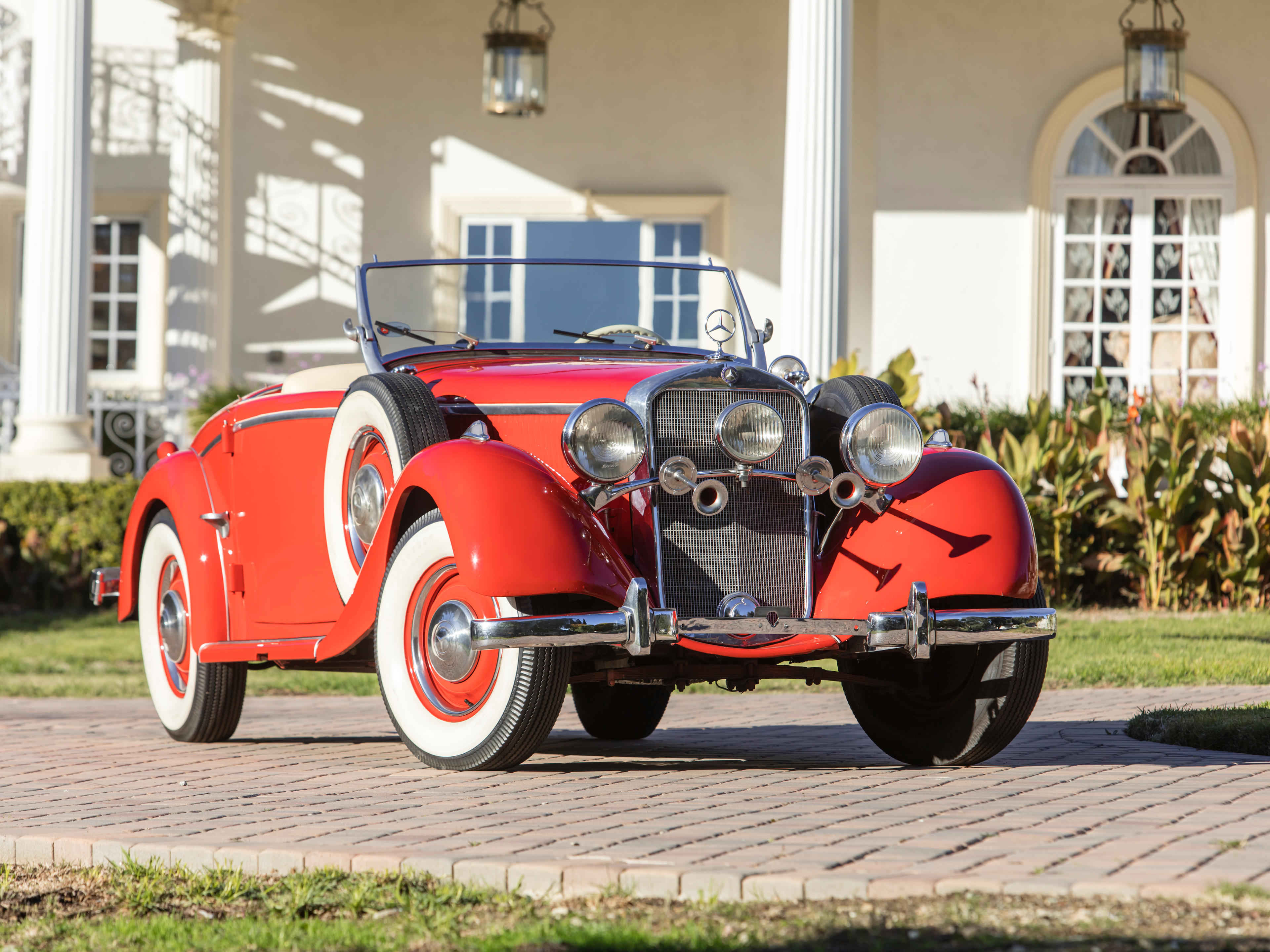
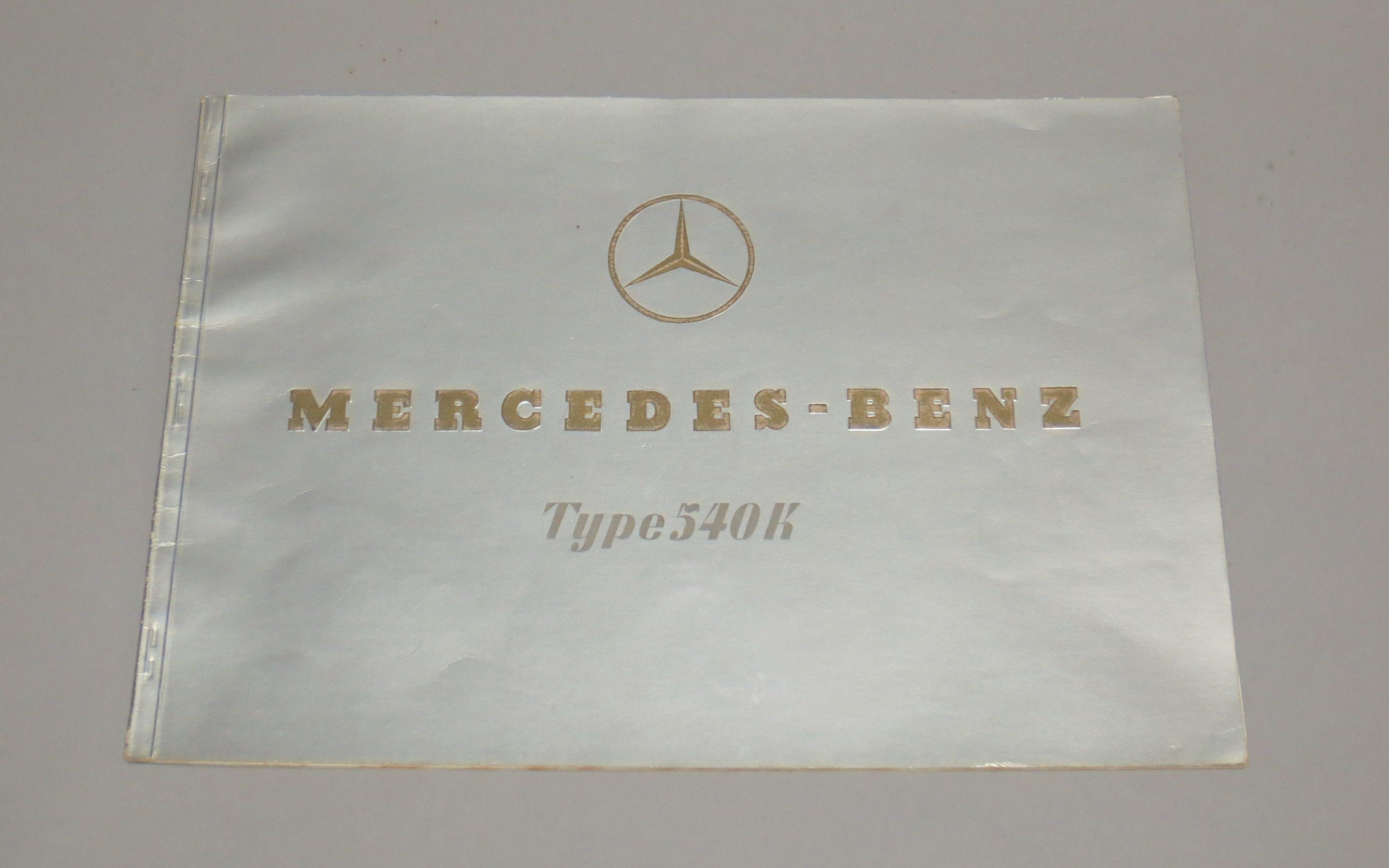
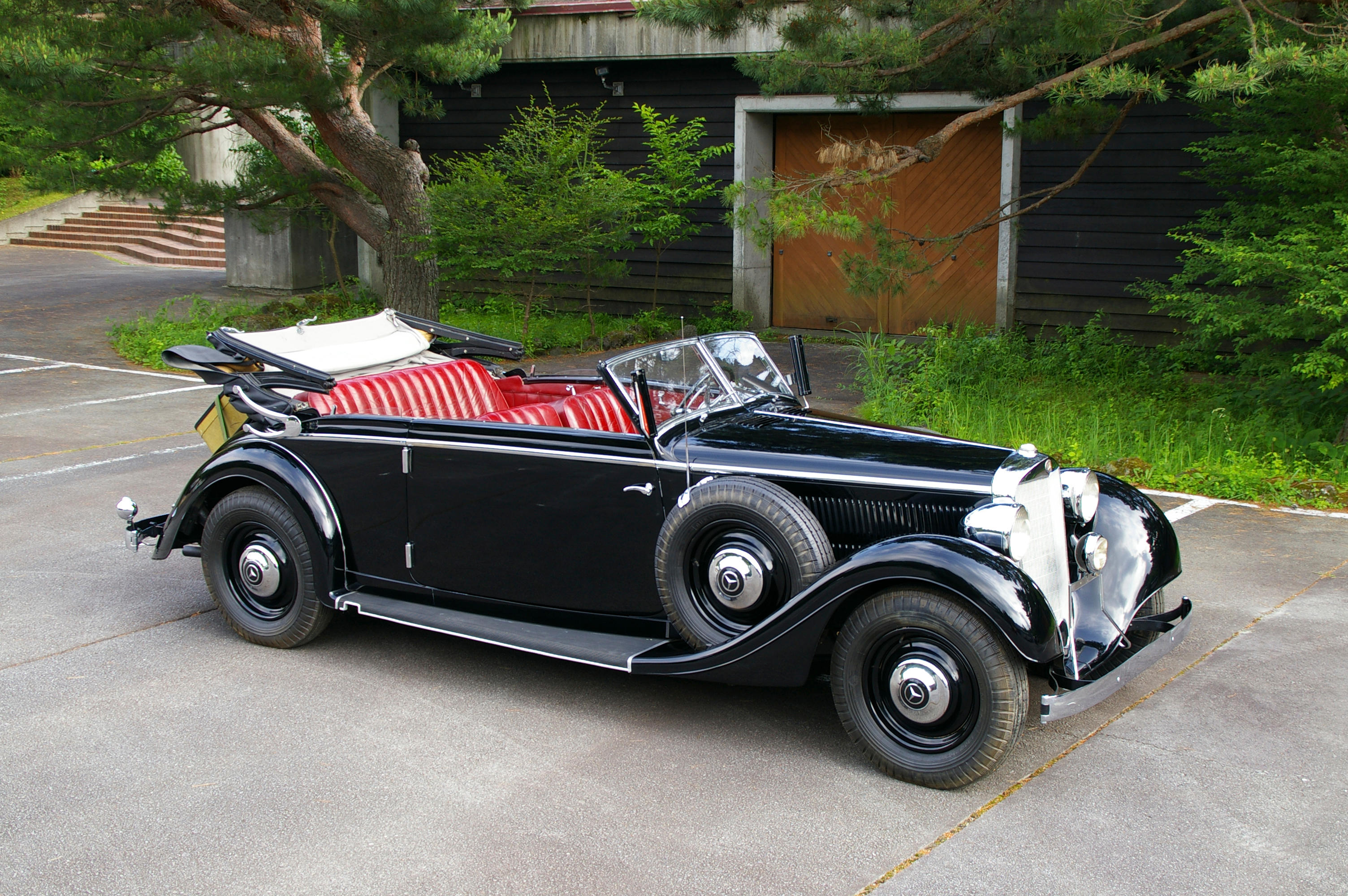
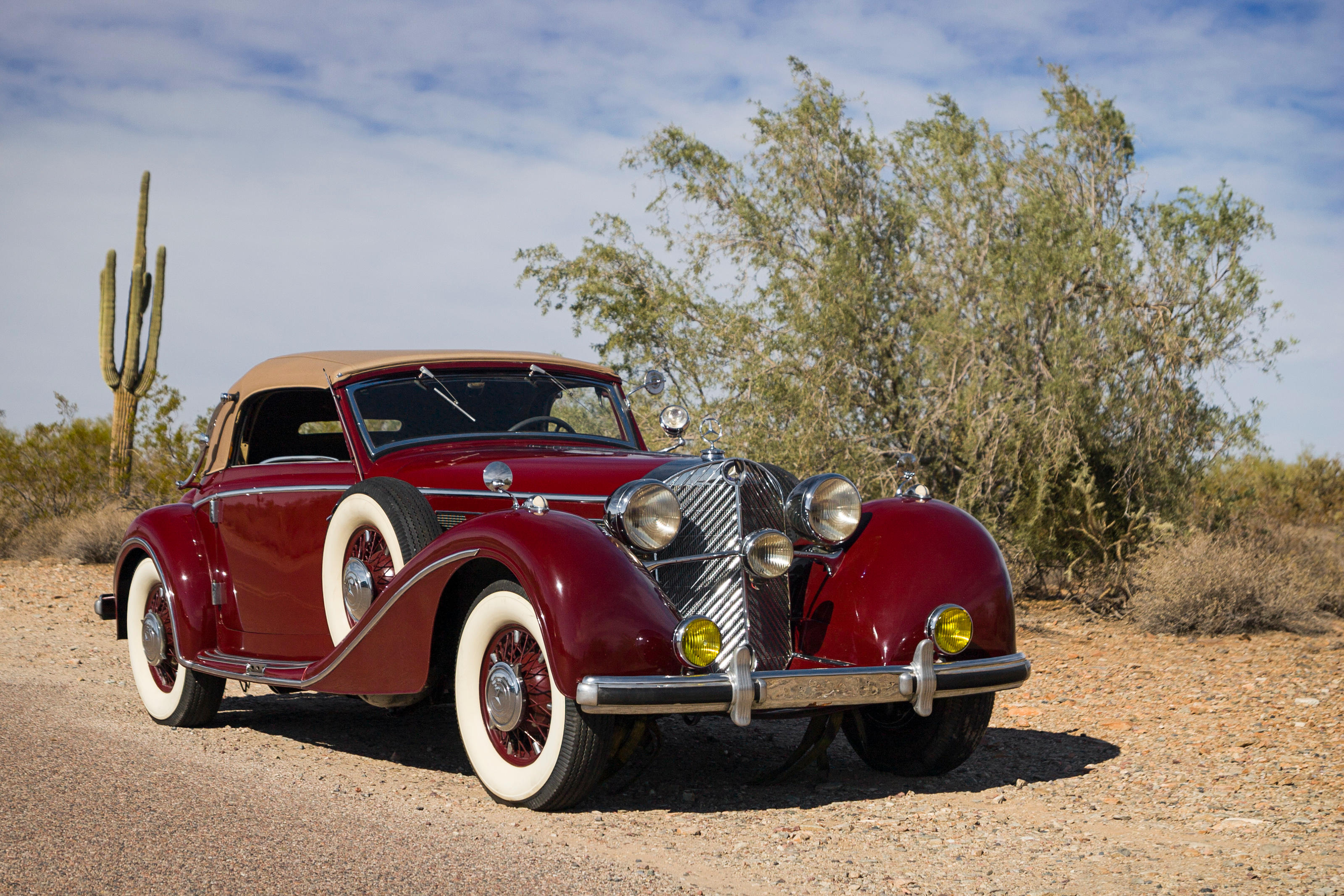
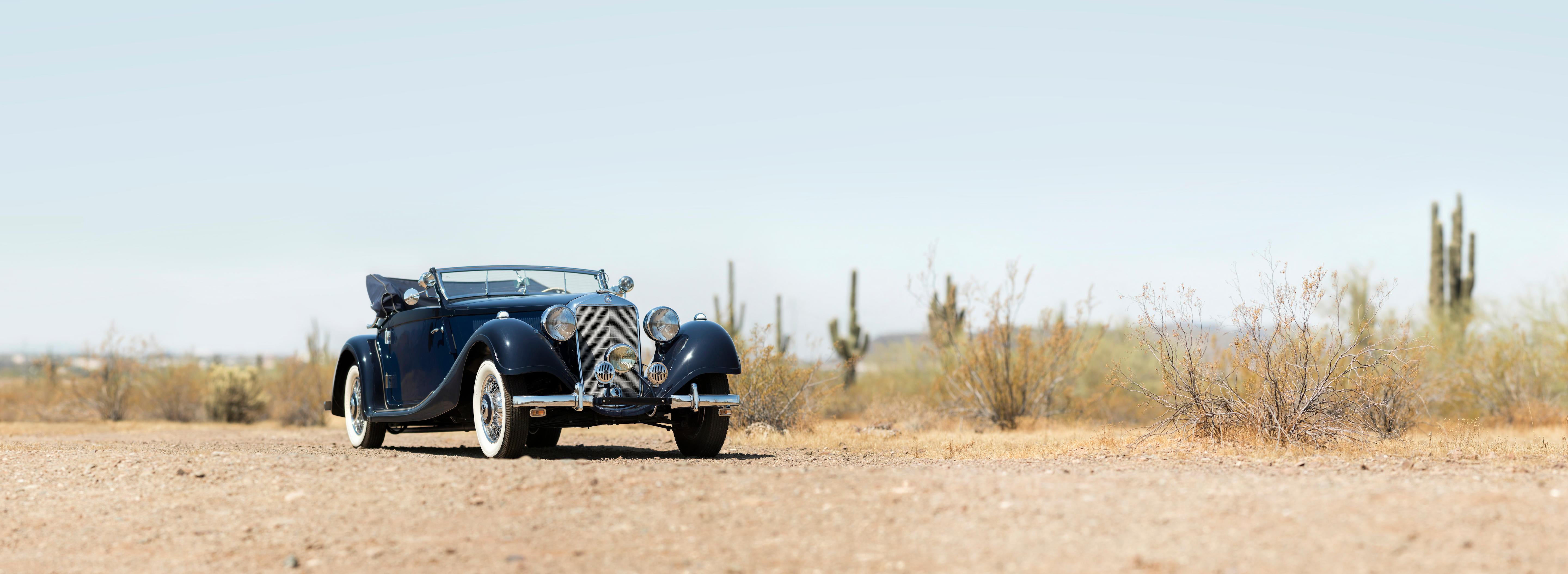



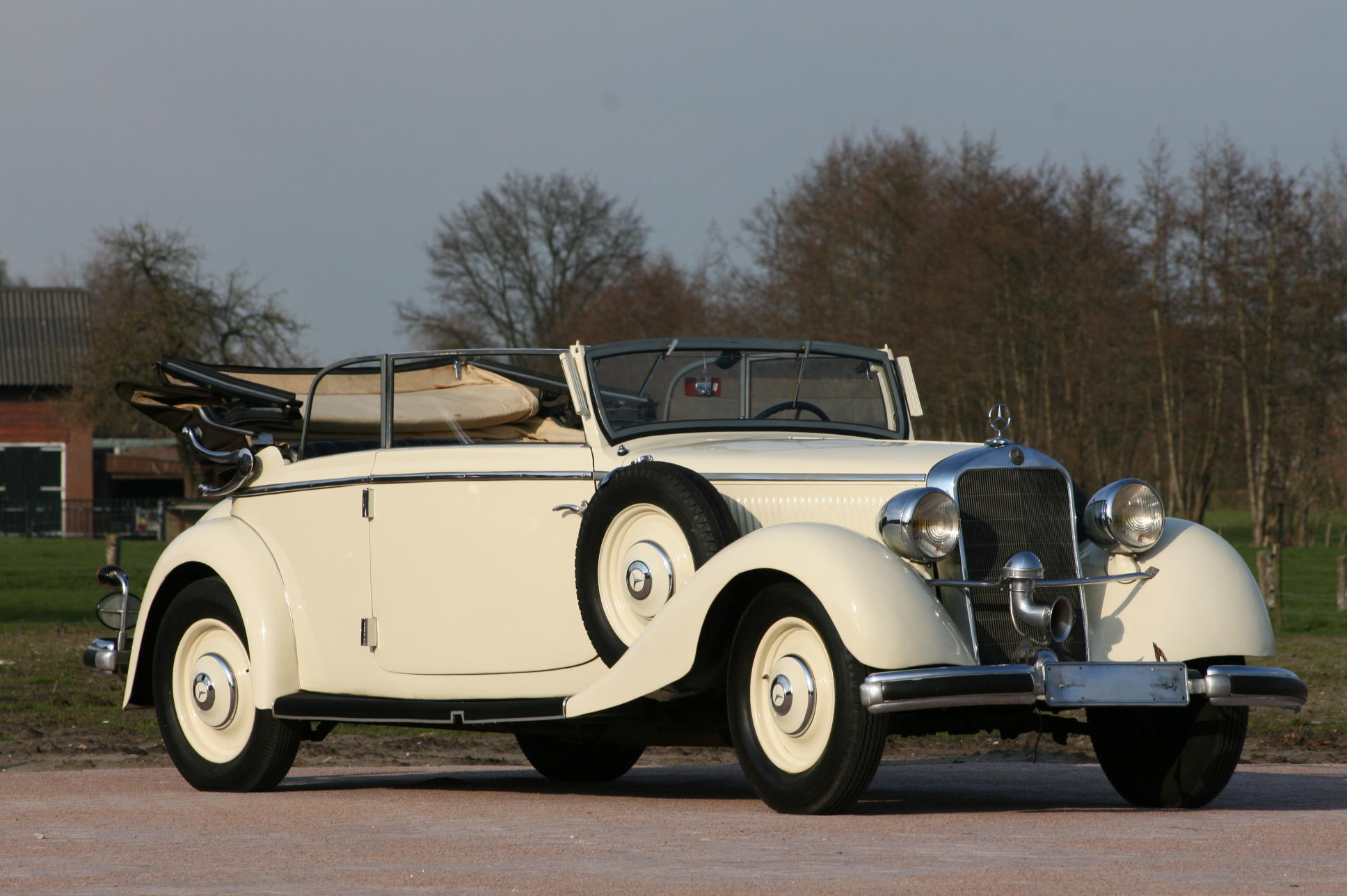
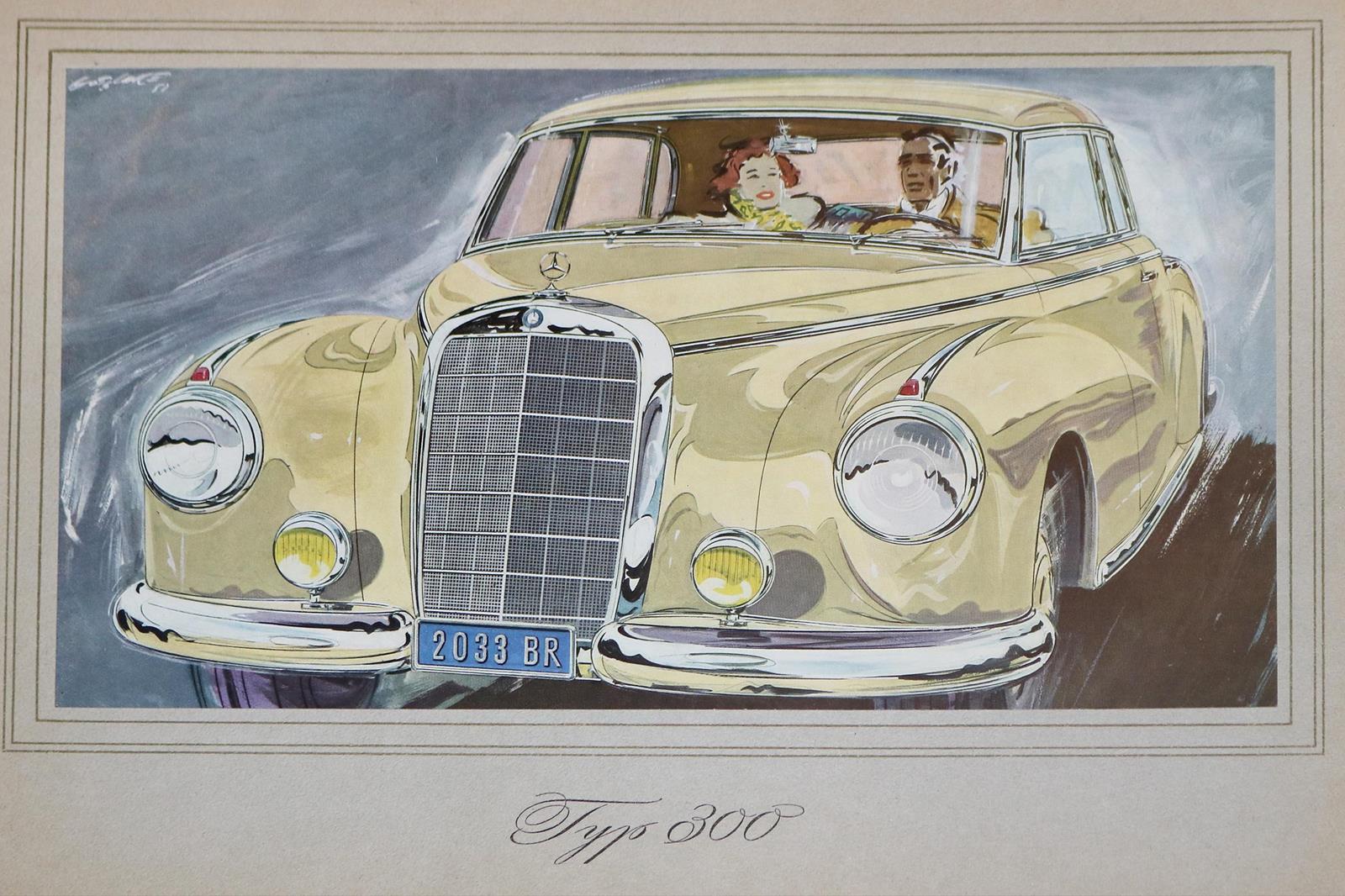
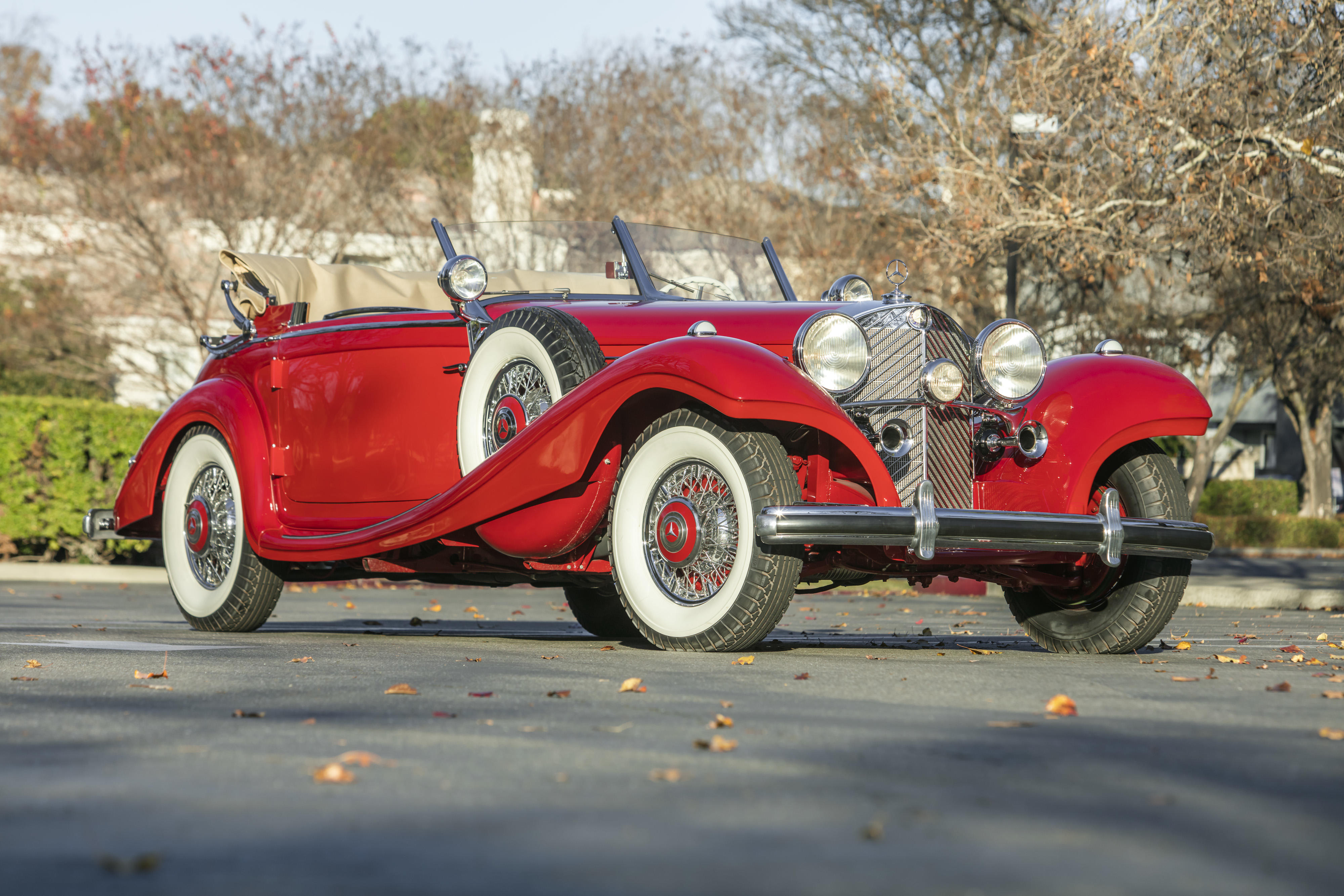
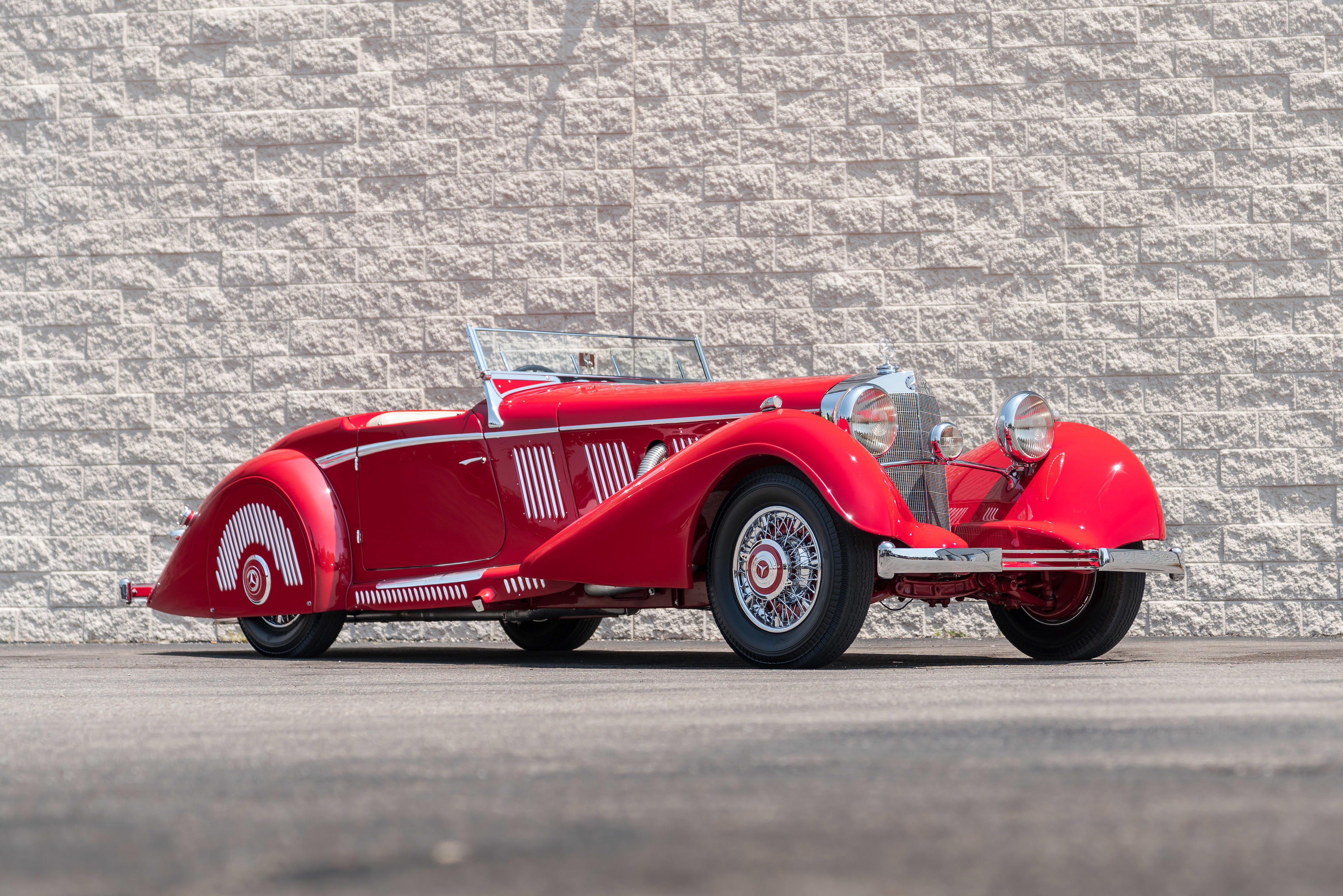
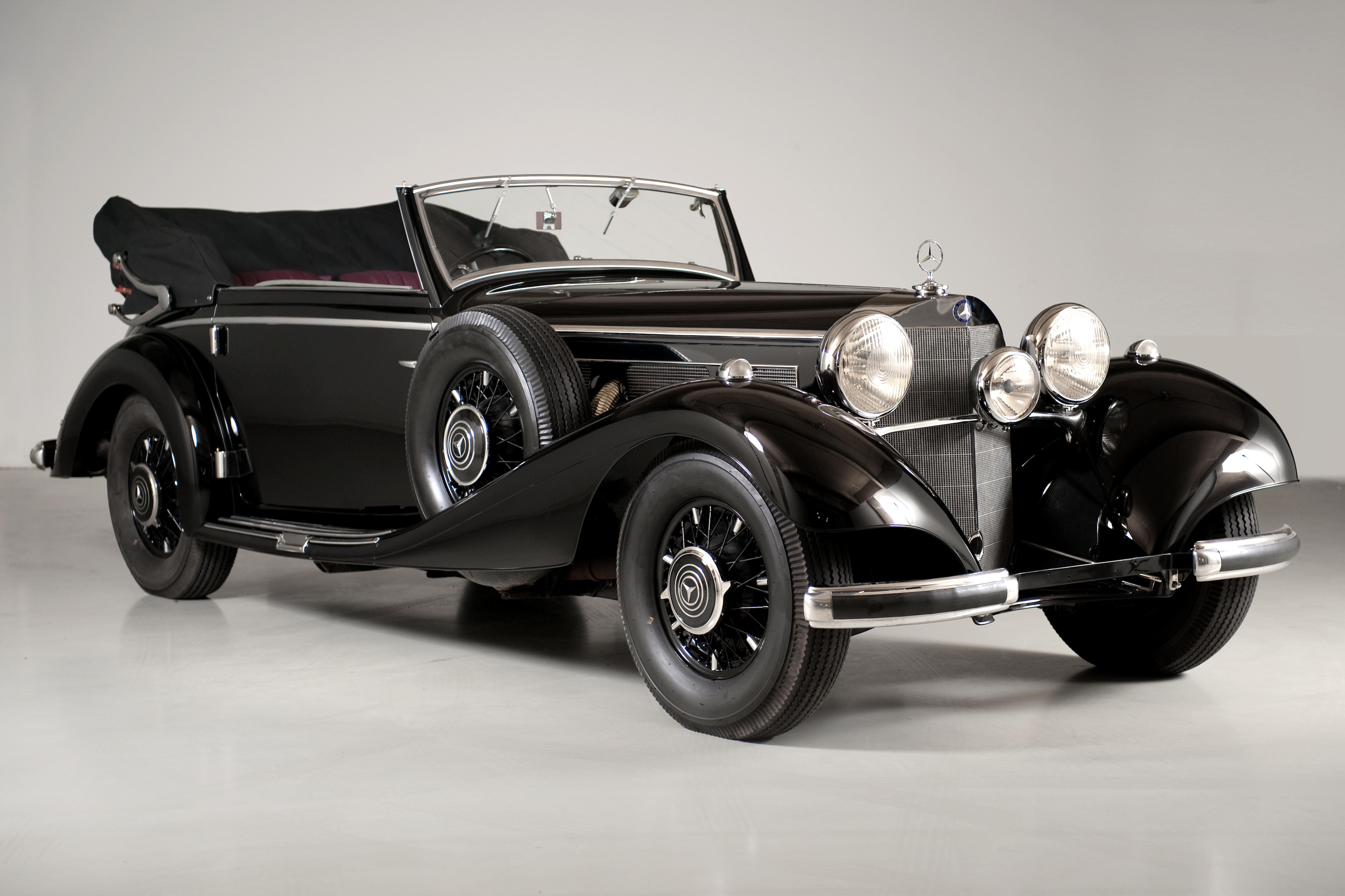

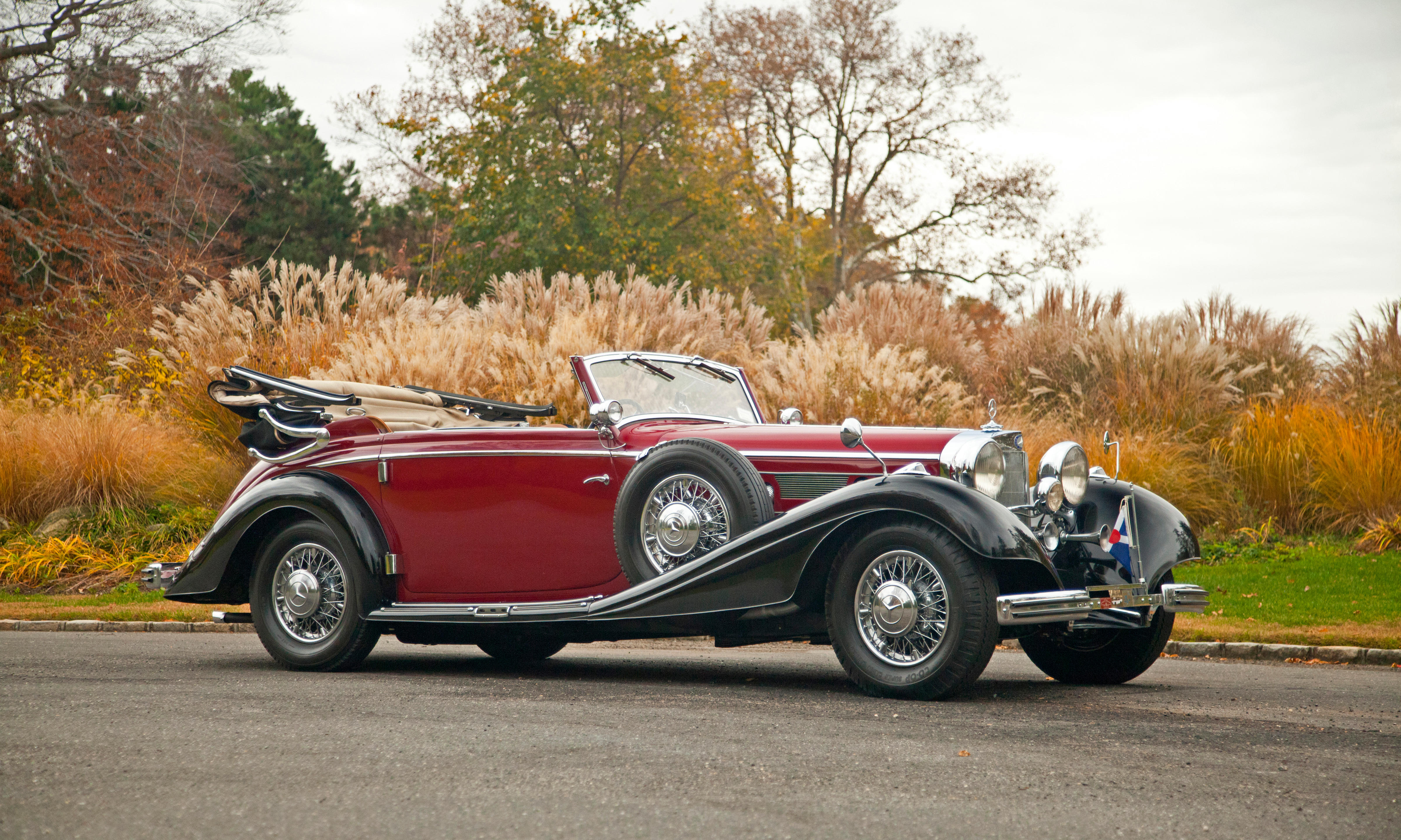
Testen Sie LotSearch und seine Premium-Features 7 Tage - ohne Kosten!
Lassen Sie sich automatisch über neue Objekte in kommenden Auktionen benachrichtigen.
Suchauftrag anlegen